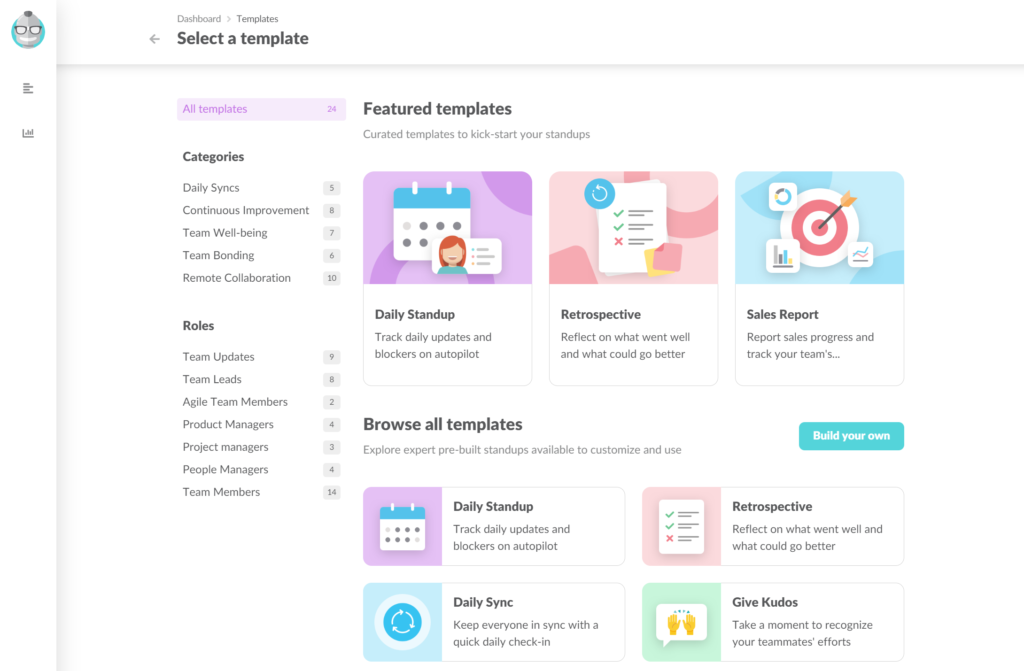Agile sprints don’t always go as planned. Sometimes there are too many unfinished tasks at the end of the sprint. Then there are cases when the finished product doesn’t seem to look anything like planned — the tasks were misinterpreted or there are too many errors with the execution.
Lastly, more often than not, your agile team appears to be exhausted and demoralized, which affects their productivity during the next sprint. Unfortunately, it is often hard to pinpoint the root cause of these problems, and they keep repeating themselves over and over. For some agile managers, a mid-sprint check-in (or simply “sprint check-in”) might sound like a good solution.
This article will cover what sprint check-in is, how to conduct it properly, and whether having sprint check-in is a good idea altogether.
What Is A Sprint Check-In?
Sprint check-in, also called mid-sprint check-in, is a survey or a meeting conducted in the middle of the sprint to review the current sprint progress, align team focus, or discuss any issues before the Sprint Review.
The most common reason for the team to implement sprint check-in is to get early feedback in the Sprint regarding their work, especially when teams follow Sprints that are several weeks long.
Sprint check-in is not an established Scrum ceremony, nor is it mentioned in the Scrum guide. Hence why there’s no specific format that this meeting should follow. Nonetheless, teams feel the need to add Sprint check-ins in their workflow to gain the following benefits:
- Boost commitment to finishing sprints tasks
- Receive early feedback about finished and unfinished sprint tasks & user stories
- Uncover team performance roadblocks
- Synchronize progress of individual team members between each other
Sprint check-ins are often criticized by Agile practitioners as an unnecessary addition, adding that pivotal Scrum meetings such as Daily Standups and Retrospectives should render sprint check-ins useless.
Let’s discuss the benefits and drawbacks of adding sprint check-ins to your Sprints in detail.
How to Conduct A Sprint Check-In Meeting with Geekbot
The following tips will help you get the most value out of sprint check-ins:
- Keep it short. Don’t add too many questions. A typical check-in consists of two or three questions that are designed to be answered within a minute. Prioritise scale-based questions (e.g. “On a scale from 1 to 5…”) over open-ended questions.
- Automate the process. Use Slack or Ms Teams bots (e.g. Geekbot) to automate sending check-in questions and gathering responses to ensure these check-ins are not eating everyone’s time.
- Combine check-in data with retrospectives. Retrospectives are designed to help teams continuously improve, and mid-sprint data can be valuable in determining how to do that.
Here’s how you can effortlessly conduct a sprint check-in meeting in Slack or MS Teams with Geekbot:
Open Geekbot dashboard and select “Build your own” template.

Configure what days you want to conduct check-ins on and who receives them.

Edit questions that you want your team members to receive during check-ins.
For example:
- On a scale from 1 to 5, how confident are you that you will meet your sprint’s deliverables?
- On a scale from 1 to 5, how confident are you about the rest of the team delivering their deliverables?
- Are you satisfied with how your team progresses with the sprint tasks?
Geekbot will automatically gather responses from the team and store them in a designated Slack or MS Teams Channel.
Analyzing team responses, you might notice low scores or that several people report issues on a sprint. This is an excellent opportunity for discussion during a retrospective meeting or for launching a standalone well-being survey.
It’s crucial NOT to schedule too many follow-up meetings as your team is currently in the middle of the sprint and should be focused mainly on completing their tasks, not participating in more meetings.
Benefits and Disadvantages of Adding Sprint Check-Ins To Your Workflows
Benefit #1. Improved Sprint Alignment
If you are struggling with misalignment in your team, you’re not alone. This misalignment in the team manifests differently, especially during the Sprint with various tasks and goals in motion. When misaligned, your team members might not be focused on the right tasks, may have different opinions regarding their execution, or simply not understand each other due to the lack communication
A sprint check-in allows you to surface misalignment issues before they crawl all the way into the finished product.
Benefit #2. Get Early Feedback From Employees
Receiving feedback from your colleagues during the Sprint is paramount for spotting improvement opportunities and ensuring your team completes their Sprint goals on time.
But often employees are hesitant to give such feedback because:
- The issues they want to discuss are not minor and not fit for a short discussion that daily standup encourage
- They don’t want to take time from their team or put someone on the spot
- They are afraid to disrupt the Sprint pace and team production rhythm
Benefit #3. Utilize Power of Appreciation
Taking time to acknowledge the team’s great work is another valuable component of check-in meetings. Astonishing 66% of employees feel like quitting their jobs because they lack appreciation.
If you want to keep your best players in the game, a mid-sprint review is an excellent opportunity to highlight team achievement and professionalism.
Drawback #1. Can Be Easily Turned Into a Harmful Status Meeting
If you want to add sprint check-in to increase the level of control over your team, you are up for a failure. This meeting is not intended to serve as a way to tighten the screws in your workflow but as a way to align your team members and help them become more productive during the Sprint.
To prevent check-ins from turning into the status meeting, ask yourself:
- What is the purpose of check-ins in our team?
- Do I use the data I get during sprint check-ins to control how my team members work?
- What would I lose if I replace our sprint check-ins with short status update meetings?
There are already too many useless meetings that many companies are actively trying to get rid of, so don’t add another one to your plate.
Drawback #2. Not a Part of a Scrum Framework
Despite its name, Agile is pretty fixed in certain ways, as is Scrum. Changing Agile and “adapting it to your needs” is one of the faulty mindsets that prevent teams from getting the most value out of the methodology.
Scrum consists of a number of ceremonies, and each one of them has a clearly defined purpose and structure. Agile practitioners tested the system for decades, and sometimes even minor changes can have a substantial negative impact on your team’s performance.
That’s why Agile practitioners can be critical of Sprint check-ins: adding them to your workflow has significant disruptive potential, especially if your team is inexperienced. Before adding mid-sprint check-ins, ask yourself if you’re utilizing other Scrum meetings to their full potential.
- If your team struggles to prioritize tasks or lacks alignment, inspect your daily standups
- If your team has major unresolved issues that affect their productivity in the long term, inspect your retrospectives
- If your team regularly misses their deadlines, inspect how your team evaluate tasks during Sprint Planning
- If your team has not enough work to do during the Sprint, consider making your Sprints shorter
The majority of problems that Agile teams experience have roots in improper implementation of pivotal Scrum ceremonies, so make sure to learn more about Scrum meetings and making the most of them before adding more meetings that might do more harm than good.
Should You Conduct Sprint Check-Ins With Your Team?
There’s no easy answer to this question as there are so many factors at play here. Sometimes a mid-sprint check-in is a temporary fix to a pressing issue. Other times it’s a bad attempt to increase control.
The critical thing to remember is that Scrum is a well-defined methodology. Slight changes may produce a butterfly effect, and adding one more check-in meeting can devalue all other Scrum meetings in one way or another.
So before adding check-ins, it’s best to try and fix your issues using standard Scrum tools: conduct a retrospective, conduct an employee survey, and re-evaluate your Sprint length. If nothing helps and you deem check-ins necessary, add these meetings in “demo” mode. Over one month, analyze how the addition impacts key team metrics such as employee satisfaction, sprint performance, and team morale.
Geekbot offers an easy way to take your Scrum meetings to the next level and fix most of your problems without reinventing the wheel. Conduct short and effective stand-ups, retrospectives, and employee surveys directly in Slack and MS Teams and know precisely how to improve your team efficiency.
Grab our 10-people free plan and see for yourself what asynchronous meetings can do for your team!



